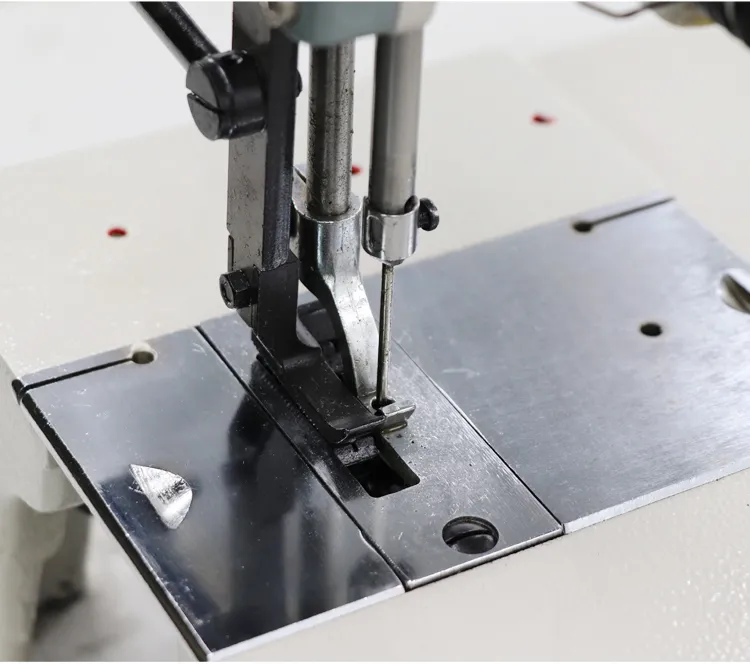Exploring the Functionality and Applications of Industrial Zigzag Stitching Machines in Modern Manufacturing
The Industrial Zig Zag Machine Revolutionizing Fabric Production
In the realm of textile manufacturing, the industrial zig zag machine stands as a pivotal innovation that has transformed the way fabrics are produced and finished. This specialized machine is designed to create a zigzag stitch, a type of decorative and functional stitch that serves various purposes in garment construction and textile applications.
One of the primary functions of the zig zag stitch is to provide flexibility and stretch to fabrics. Traditional straight stitches, while strong, can sometimes lead to fabric breakage, particularly in stretchable materials. The zig zag stitch, on the other hand, allows for greater elasticity, making it ideal for sewing knits, activewear, and other stretchy fabrics. This feature is especially important in an era where fashion demands not only aesthetic appeal but also comfort and functionality.
The industrial zig zag machine operates with precision and speed, enabling manufacturers to enhance productivity. With advancements in technology, modern machines are equipped with computerized controls that allow for easy customization of stitch width, length, and pattern. This versatility enables manufacturers to meet diverse customer demands and explore creative possibilities in fabric design. Whether producing simple garments or intricate patterns, the machine’s adaptability plays a crucial role.
In addition to versatility, the zig zag stitch offers several advantages in the finishing process of textiles. It can be used for seaming, hemming, and securing edges to prevent fraying. The durability of the zig zag stitch makes it particularly useful in high-stress areas, such as armholes, waistlines, and pockets, where traditional stitching methods may falter. This not only enhances the longevity of the garment but also improves overall quality, which is vital in a competitive market.
industrial zig zag machine

Moreover, the zig zag machine plays a significant role in the production of specialty fabrics. In industries such as upholstery, automotive, and home textiles, the zig zag stitch is employed to enhance the aesthetic appeal while ensuring structural integrity. For instance, in upholstery work, the decorative nature of the zig zag stitch can elevate the design of sofas and chairs, making them not only functional but also visually appealing. Similarly, in automotive applications, the stitch contributes to the durability and style of car interiors.
The adoption of the industrial zig zag machine is also a testament to the evolving landscape of sustainable manufacturing. As brands increasingly prioritize sustainability, efficient machines that reduce waste and enhance productivity are in high demand. The zig zag machine allows for precise cutting and stitching, minimizing fabric wastage during production. Furthermore, advancements in technology have led to the development of machines that consume less energy, aligning with the industry's goal of reducing its carbon footprint.
Training and upskilling workers to operate advanced zig zag machines is crucial for maximizing their potential. Manufacturers invest in programs that educate employees on machine operation and maintenance, ensuring that they can harness the full capabilities of these machines. A skilled workforce not only contributes to the efficiency of the production process but also fosters a culture of innovation within textile companies.
In conclusion, the industrial zig zag machine has revolutionized the textile industry by providing versatility, efficiency, and durability. Its ability to create stretchable, decorative, and secure stitches has made it an indispensable tool for manufacturers. As the industry continues to evolve, the zig zag machine will undoubtedly play a crucial role in meeting the demands of modern production while embracing sustainable practices. Through ongoing innovation and skilled labor, the future of the textile industry holds endless possibilities, with the zig zag machine at the forefront of this transformation.
-
Leather Sewing Machine: The Industrial Standard for Tough MaterialsNewsJul.18,2025
-
Sail Making Machine: Heavy-Duty Stitching for Industrial and Marine NeedsNewsJul.18,2025
-
Sling Sewing Machine: The Backbone of Heavy-Duty FabricationNewsJul.18,2025
-
Leather Sewing Machine: Precision for Heavy-Duty StitchingNewsJul.18,2025
-
Big Bag Sewing Machine: Powering the Future of Bulk PackagingNewsJul.18,2025
-
FIBC Sewing Machine: Essential Equipment for Bulk Bag ProductionNewsJul.18,2025
-
Heavy Duty Leather Sewing Machine: A Must-Have for Professional LeatherworkNewsMay.28,2025





























